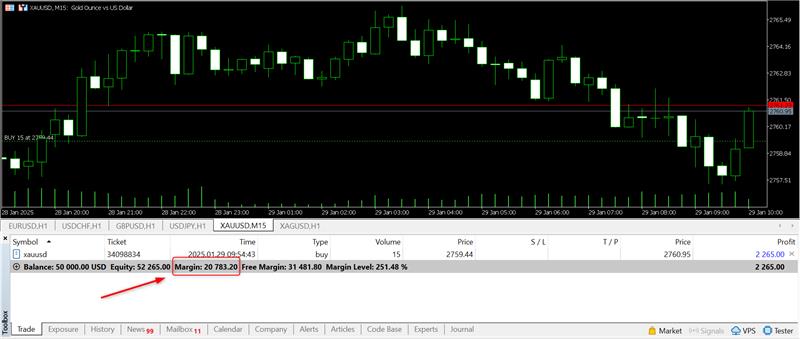Dynamic leverage, also known as floating leverage, is a trading mechanism that automatically adjusts leverage based on the size of a trader's position. As the volume of open positions increases, the maximum leverage offered gradually decreases to help manage risk more effectively.
How Does Dynamic Leverage Work?
Unlike fixed leverage, which remains constant regardless of position size, dynamic leverage adapts in real-time. This means that smaller trades can benefit from higher leverage, while larger positions are assigned lower leverage to reduce market exposure and potential risk.
Dynamic Leverage at Eurotrader
At Eurotrader, we implement a tiered leverage system, where leverage decreases progressively as the trade volume increases. Here’s an example of how it works with XAUUSD (Gold):
Example Calculation:
Let's assume a trader opens a 15-lot XAUUSD position at a price of $2,759.44.
Margin Calculation Formula:
Margin = Volume × Contract Size × Symbol Price ÷ Leverage
Margin Breakdown by Leverage Tiers:
🔹First Tier: 1,000,000 ÷ 1:1000 = $1,000
🔹Second Tier: 1,000,000 ÷ 1:500 = $2,000
🔹Third Tier: 1,000,000 ÷ 1:200 = $5,000
🔹Fourth Tier: 1,000,000 ÷ 1:100 = $10,000
🔹Fifth Tier: 139,160 ÷ 1:50 = $2,783.2
Total Margin Required: $20,783.2
Why Does Eurotrader Use Dynamic Leverage?
🔹Risk Management – Helps prevent excessive market exposure on large trades.
🔹Efficient Capital Usage – Smaller trades benefit from higher leverage.
🔹Adaptive Trading Conditions – Ensures traders can optimize their positions without unnecessary risk.
You can see the detailed information for every asset group by clicking on the link.
At Eurotrader, we provide advanced risk management tools to help traders stay in control of their investments.
Need assistance? Contact our support team for the most accurate and up-to-date information.
Sign up today and start trading!
